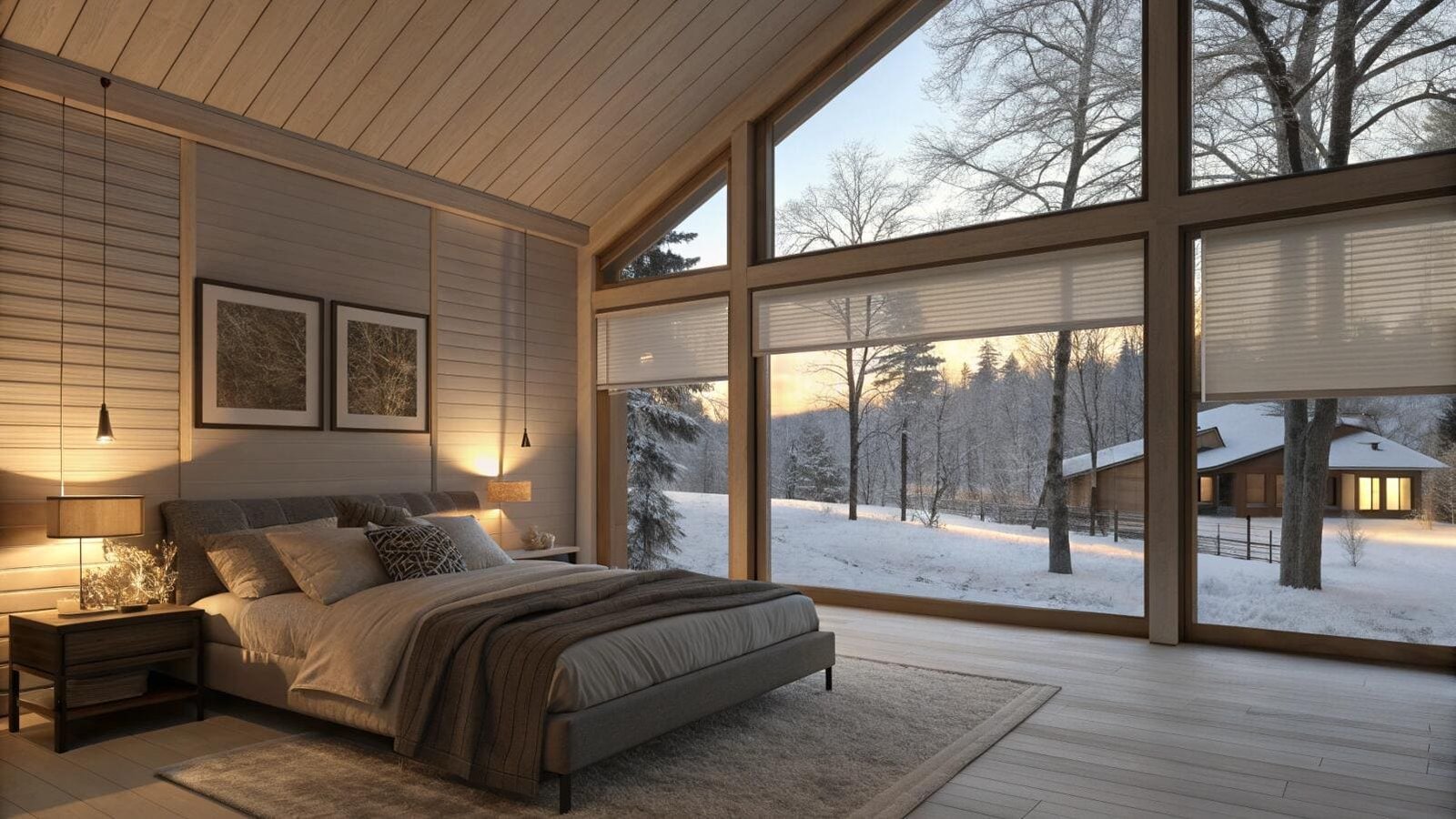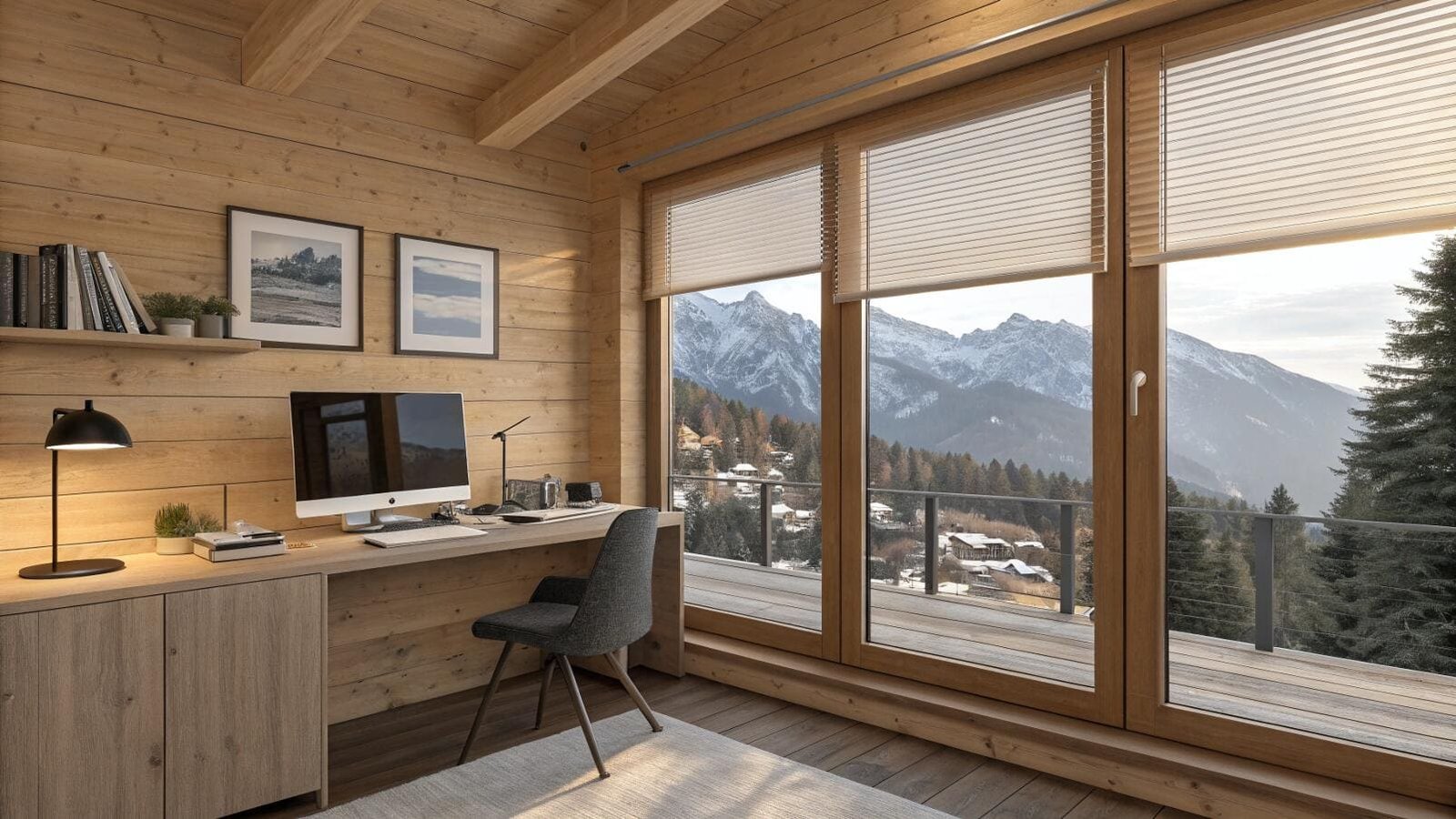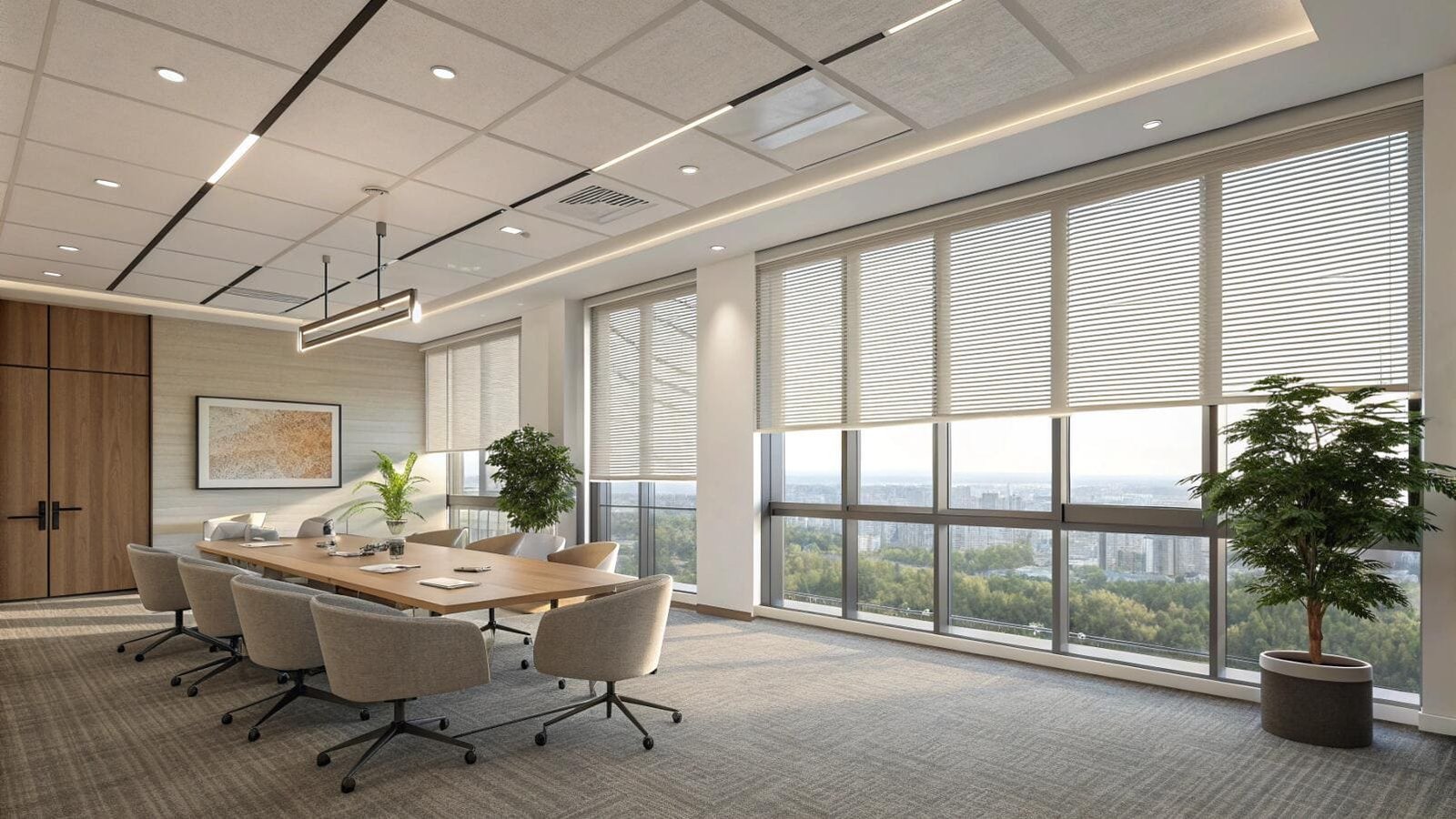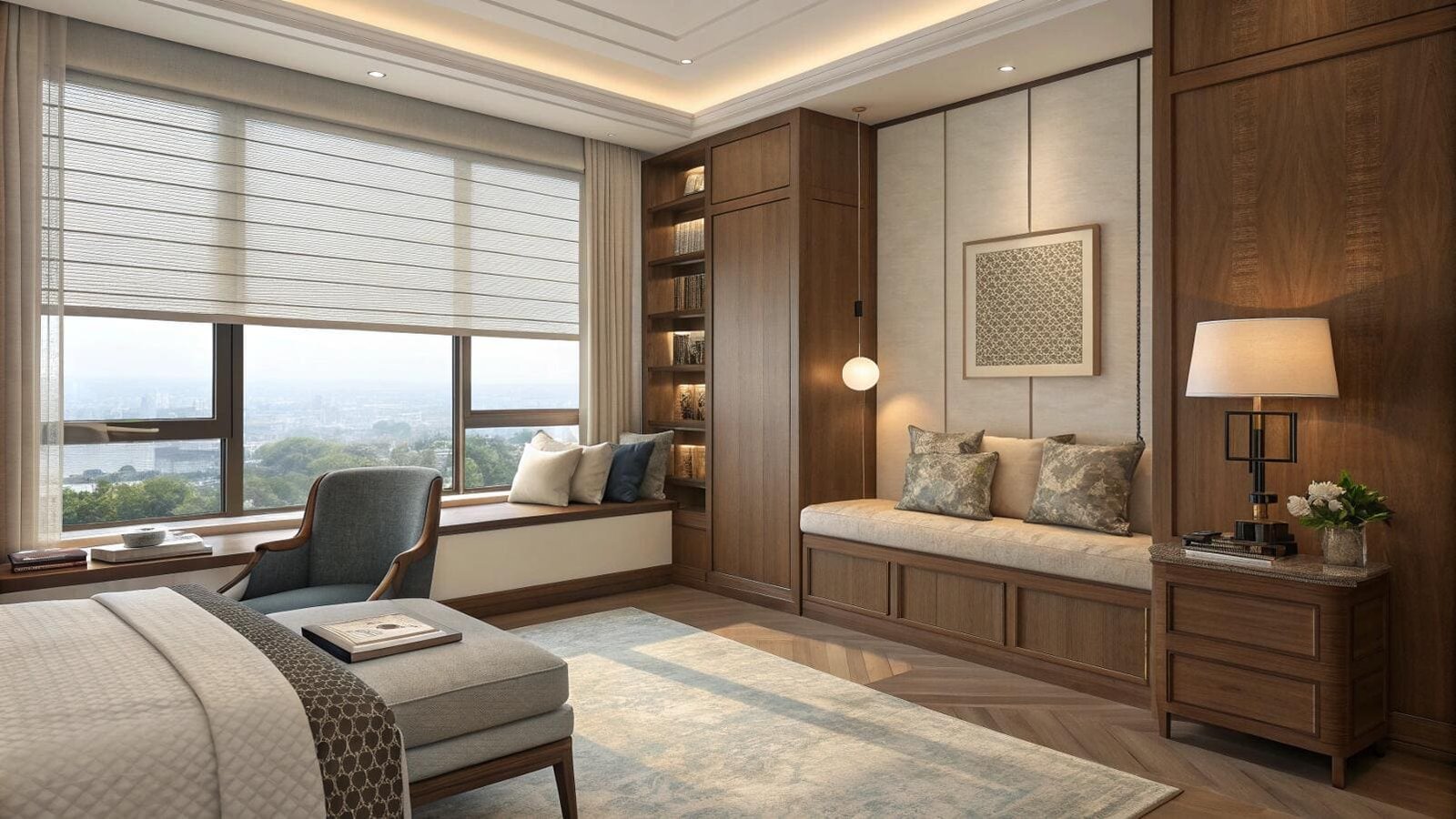Your project's windows are leaking energy, and heating and cooling costs are too high. This wastes money and compromises comfort. Understanding R-value is the key to selecting truly insulating blinds[^1].
Insulating blinds work by trapping air to resist heat flow, a performance measured by R-value[^2]. Cellular shades have the highest R-values, up to 4.0 or more, and can significantly reduce energy loss through windows, making them a top choice for thermal efficiency.

In my years of supplying window treatments, the most common problem I help solve is energy inefficiency. Clients need to control the temperature of their spaces without breaking the bank. The secret to this is a simple metric called R-value. It's not a marketing term; it's a scientific measurement of insulation. Once you understand what R-value means and how to look for it, you can specify window coverings that deliver real, measurable performance for any project.
What is a good R-value for thermal insulation[^3]?
You see "R-value" on spec sheets, but the numbers can seem abstract. A blind with R-3 sounds good, but is it? Choosing without context can lead to poor results.
For a window covering, an R-value between 2.0 and 4.0 is considered very good. Because windows themselves have low insulation, adding a blind with this R-value can more than double the window's total thermal resistance.

To understand what makes an R-value "good," we need to think about what we are insulating. A well-insulated wall in a modern home might have an R-value of R-13 to R-21. But windows are thermal weak spots. A single-pane window has an R-value of just R-1. A standard double-pane window is better, around R-2. So, when a window treatment can add another R-3 or R-4, it's making a massive difference. It's all about context.
When I talk with project specifiers like Emma, I put these numbers into perspective for them. A blind that adds an R-value of 3.5 to a window that is only R-2.0 is a huge performance upgrade.
Typical R-Value Performance Levels
| R-Value Added by Blind | Performance Level | Best Application |
|---|---|---|
| 0 - 1.0 | Minimal | Basic privacy and light filtering only. |
| 1.0 - 2.5 | Good | Moderate climates, some noticeable improvement. |
| 2.5 - 4.0+ | Excellent | Extreme hot or cold climates, maximum energy savings. |
Looking at it this way makes it clear. For any project where energy savings and comfort are goals, you should be looking for blinds in that excellent R-2.5 to R-4.0+ range.
What is the R-value of insulating window coverings?
Many brands claim their blinds are "insulating," but the term is often used loosely. This can be misleading. To make an informed choice, you need to know the actual performance numbers.
The R-value of window coverings varies dramatically. Cellular (honeycomb) shades lead with R-values from 2.0 to over 4.0. Lined Roman shades and wood blinds offer fair insulation around R-2.0, while standard metal or vinyl blinds offer almost none (under R-1.0).

Not all window treatments are created equal when it comes to insulation. As a supplier, I always provide clear spec sheets so my clients can see the real performance data. The differences are significant, and they come down to material and construction. A thin piece of vinyl or aluminum offers very little resistance to heat transfer. In fact, metal can even conduct cold into a room. The blinds that truly insulate do so by trapping air or using thick, insulating materials. I once had a contractor who specified standard venetian blinds for a project to save on initial cost. The first winter, the client complained endlessly about feeling cold drafts near the windows. The next year, we replaced them with properly-rated cellular shades, and the problem disappeared completely.
R-Value by Blind Type
| Window Covering Type | Typical R-Value (Approx.) | How it Insulates |
|---|---|---|
| Double-Cell Cellular Shade | R-3.2 - R-4.3 | Two layers of trapped air pockets. |
| Single-Cell Cellular Shade | R-2.0 - R-3.0 | A single layer of trapped air pockets. |
| Lined Roman Shade | R-1.5 - R-2.5 | Thick fabric plus a liner, some trapped air. |
| Wood/Faux Wood Blinds | R-1.0 - R-2.0 | Wood is a natural insulator, but slats leak air. |
| Venetian/Roller Blinds | R-0 - R-1.0 | Minimal; main function is light control. |
What are the most thermal efficient blinds for the best insulation?
Your project demands maximum energy efficiency. You need the best insulating blind available. Choosing a second-rate option means leaving money and comfort on the table.
Cellular shades, specifically double-cell blackout models, are the most thermal efficient blinds you can buy. Their unique construction traps multiple layers of air and reflects heat, providing the highest possible R-value and the best insulation.

When a client asks me for the absolute best insulating product, the answer is always the same: double-cell blackout cellular shades. There is no other window treatment that comes close to their thermal performance[^4]. This isn't just an opinion; it's backed by the physics of their design. Their superiority comes from two key features working together.
Why Double-Cell Matters
A single-cell honeycomb shade traps one layer of air, which is very effective. A double-cell shade has two layers of air pockets stacked together. This doesn't just double the insulation; it improves it exponentially. The second layer of cells insulates against any minimal heat that makes it through the first layer, creating a much more powerful thermal barrier.
The Role of Blackout Liners
The "blackout" feature isn't just for blocking light. In high-performance cellular shades, the blackout liner is made from a material like Mylar with a reflective coating[^5]. This lining adds a whole new dimension of insulation by reflecting radiant heat. In the summer, it reflects the sun's heat trying to get in. In the winter, it reflects the room's furnace heat trying to get out. This combination of trapped air and radiant reflection is what gives these shades their unbeatable R-value.
Do cellular blinds really insulate?
It can sound almost too good to be true. How can a soft, fabric blind provide so much insulation? This skepticism can cause you to overlook one of the most effective energy-saving products on the market.
Yes, cellular blinds provide exceptional insulation. Their honeycomb-shaped fabric cells are specifically designed to trap a pocket of still air. This trapped air is a poor conductor of heat and effectively stops thermal transfer through the window.

The technology behind cellular shades is brilliantly simple and proven. Think about a high-quality thermal coffee mug or a double-pane window. They all work on the same principle: creating an air gap. Air itself is a fantastic insulator, as long as it's held still. Cellular shades do exactly this for the entire surface of your window.
When the shade is lowered, the cells expand and capture air. This trapped air layer prevents two types of heat transfer. First, it stops conduction, which is heat moving through a solid object. Second, and more importantly, it stops convection. Convection is when air circulates, transferring heat. By a window, cold glass cools the air near it, which then sinks, pulling warmer room air towards the window to be cooled in a constant loop. Cellular shades put a hard stop to this convection cycle. It’s like putting a winter coat on your window. The coat doesn't create heat; it just traps your body heat. These blinds trap your room's air, keeping it stable and comfortable.
Is it worth getting thermal blinds?
Thermal blinds have a higher initial cost, and project budgets are always tight. It can be tempting to save money upfront with a cheaper, non-insulating blind. But this is often a costly mistake.
Yes, getting thermal blinds is worth it for almost any project. The money you save on monthly heating and cooling bills provides a clear return on investment. Over their lifespan, high-performance blinds can pay for themselves and continue to save you money.

I always encourage my clients to think about the "Total Cost of Ownership," not just the purchase price. A cheap blind has a low upfront cost but costs you money on your energy bill every single month. A thermal blind is an investment that starts paying you back on day one.
Let's imagine a simple scenario. Equipping a house with standard blinds costs $1,500. Choosing our high-performance thermal cellular blinds costs $2,200, an extra $700. If those blinds save the homeowner just $30 a month on energy bills ($360 per year), the extra investment is paid back in less than two years ($700 ÷ $360/year = ~1.9 years). For the next 8+ years of the blinds' lifespan, that $360 is pure savings. The financial case is clear. But the value goes beyond just money. The increased comfort of a room without cold spots or stifling heat, the quietness from sound absorption, and the protection of furniture from UV rays all add immense value that a simple price tag can't capture.
How does proper installation and fit affect the thermal performance of insulating blinds?
You've invested in the best insulating blinds, but the room still feels drafty. The product isn't failing; the installation might be. This is a common and critical final step.
Proper fit is essential for thermal performance. Gaps around the edges of the blind allow air to flow freely, creating convection currents that completely bypass the insulation. A snug fit with minimal gaps ensures the trapped air barrier works as designed.

Buying a high-performance blind and installing it poorly is like buying a winter coat and leaving it unzipped. All the insulating potential is wasted because of a simple loophole. This is why getting the measurements right is just as important as selecting the right product.
The Problem of Air Gaps
The small gaps at the sides, top, or bottom of a blind create a path for air to circulate. Cold air from the window surface sinks through the bottom gap, pulling warm room air through the top gap to be cooled. This convection loop completely defeats the purpose of the blind's insulating cells.
Maximizing the Seal
- Precise Measurement: Whether you choose an inside mount or an outside mount, the measurements must be exact to minimize these gaps. An inside mount should fit snugly within the frame, while an outside mount should overlap the frame by at least 1.5 inches on all sides to create a better seal.
- Side Channels: For projects where thermal control is a top priority, like a home theater or a lab, we can provide side channels. These are tracks that the edges of the blind fit into, creating a near-perfect seal. This is the ultimate solution for maximizing thermal performance and light blockage.
This is why we work so closely with project contractors. Ensuring the product is measured and installed correctly is the final, crucial step to delivering the performance the client paid for.
Conclusion
Understanding R-value is your key to choosing blinds that truly insulate. Cellular shades provide the best thermal performance, but only a snug, professional fit ensures you get the full energy-saving benefits.
---
[^1]: Explore how insulating blinds can significantly reduce energy loss and improve your home's thermal efficiency.
[^2]: Understanding R-value is crucial for selecting effective insulating blinds that save energy and enhance comfort.
[^3]: Explore the importance of thermal insulation in maintaining comfortable indoor temperatures.
[^4]: Learn about the key factors that influence the thermal performance of window blinds.
[^5]: Learn how reflective coatings enhance the insulation properties of window treatments.Partner with VelaBlinds for Your Next Project
Smart window treatments shouldn't be complicated. After working with 500+ distributors and contractors worldwide, I've streamlined the process to get you quality products, competitive pricing, and reliable support - every time.
Why project professionals choose VelaBlinds:
- ✅ Fast, Accurate Quotes - Detailed specs and pricing within 24 hours
- ✅ Transparent Pricing - No hidden fees, volume discounts clearly outlined
- ✅ Quality Assurance - Direct partnerships with certified OEM manufacturers
- ✅ Project Support - Dedicated account manager from quote to delivery
Start your next project:
📧 Quick Quote: Send your requirements to info@velablinds.com
📱 Direct Contact: WhatsApp +86 137 2012 8317
🌐 Browse Solutions: https://velablinds.com/
📁 Product Resources: Access spec sheets, catalogs & project files
Jimmy Chen, Founder
"I built VelaBlinds to solve the real challenges I faced as a project buyer - long lead times, unclear specs, and unreliable suppliers. Let's discuss how we can power your projects with smarter blinds."
Serving distributors and contractors across North America, Europe, and Australia since 2018.




